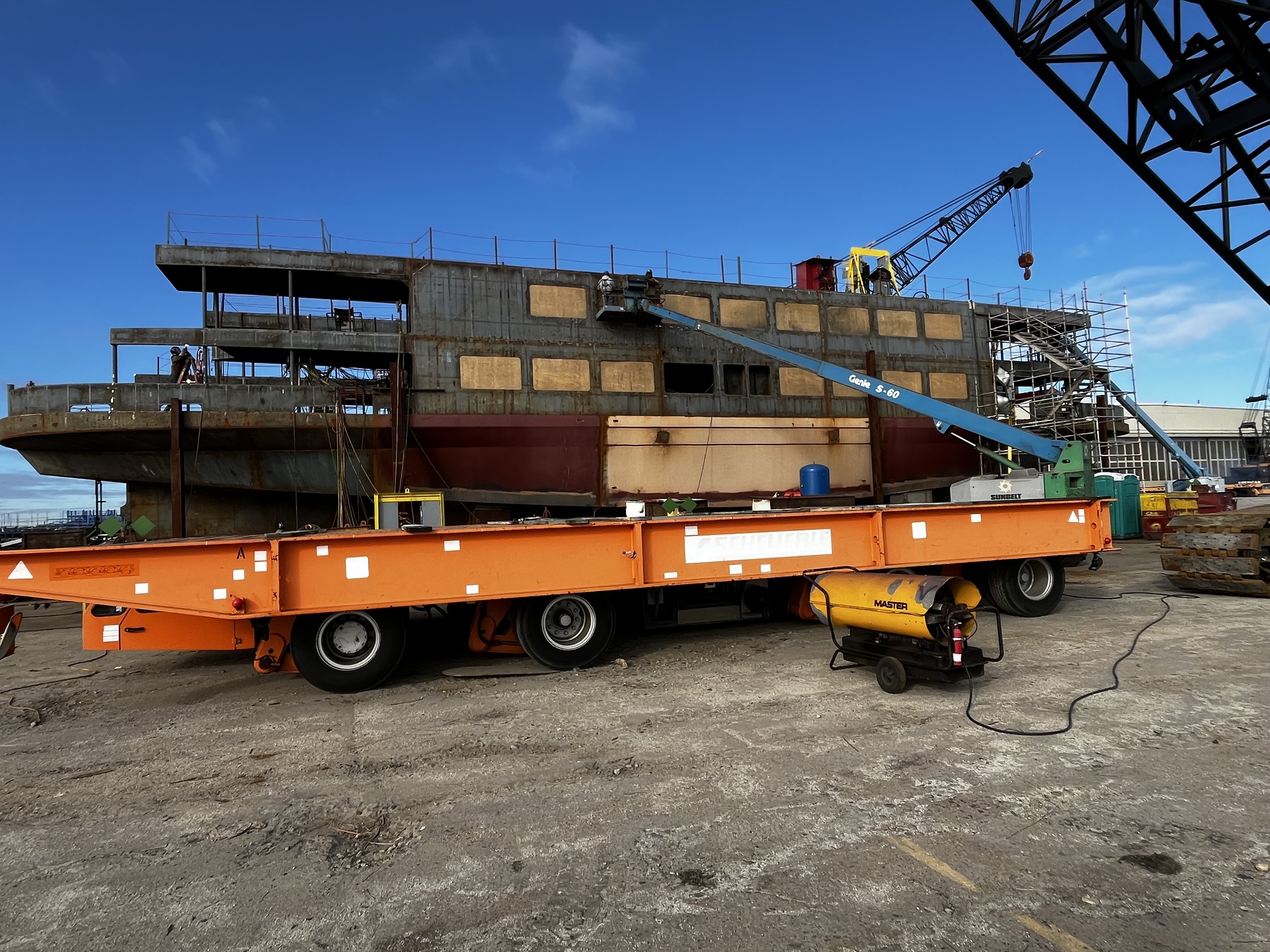
Casco Bay Lines
In 2018, EBDG was selected by Casco Bay Lines to design a new car ferry for service between Portland, Maine and Peaks Island. The hybrid-electric ferry has capacity for 15 vehicles and 599 passengers, spread across three decks including a sun deck with unobstructed views. The ferry is currently under construction at Senesco Marine and will enter operating service soon.




EBDG’s Scope
EBDG prepared a propulsion selection study as part of the preliminary design effort for this new vehicle ferry. The study compared various propulsion systems ranging from diesel mechanical to all-electric based on capital cost, operating cost, reliability, serviceability, CO2 emissions and in port noise and exhaust generation.
EBDG worked with the client and their steering committee to consider different sizes and configurations of the new ferry. EBDG completed contract design of the ferry and is currently providing technical support services to Casco Bay Line as the ferry progresses through construction.
Vessel Particulars
Casco Bay Lines Transit District
164’
39’ - 10.5”
USCG Subchapter K
599
Owner:
Length:
Beam:
Regulatory:
Passenger Cap.:
Design Features
The ferry features ABB Marine & Ports' hybrid propulsion system supporting diesel-electric and zero-emissions battery-powered modes, as well as a combination of both. With the ferry operating in zero-emission mode, the passengers will benefit from a smoother, quieter and cleaner ride. A Stemmann Technik FerryCHARGER shore charging system is also provided by ABB for rapid vessel charging in Portland.
The completed ferry will provide year-round passenger and vehicle service to Peaks Island in Casco Bay from Portland, Maine. It will continue this service that has been provided by the MACHIGONNE II for the past 35 years. Casco Bay Lines currently use the MACHIGONNE II to carry cargo and freight, as well as postal delivery service along with passengers and vehicles. As the design of the new ferry was developed, EBDG worked with Casco Bay Line to ensure designated cargo areas were preserved and improved, as well as improving loading and unloading characteristics related to passenger and freight vehicles at both terminals.
The double-ended configuration eliminates the need to turn the vessel around and thus reduces the required speed and energy consumption for the new vessel even though it is larger than the MACHIGONNE II.

